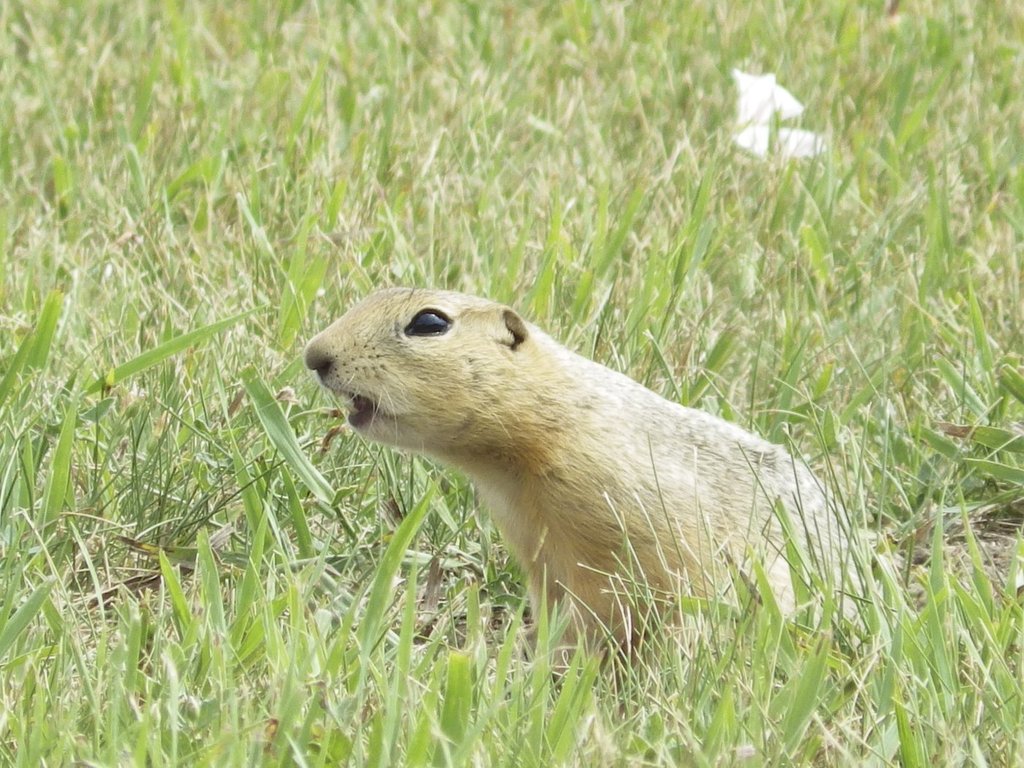Climate Change and Urban Development Force Ground Squirrels into Human Conflict in North Dakota
In Minot, North Dakota, an environmental crisis is unfolding as native Richardson's ground squirrels, displaced by habitat loss, seek refuge in urban areas. This growing wildlife-human conflict highlights the complex challenges of sustainable urban development and ecosystem preservation in the face of changing landscapes.

A Richardson's ground squirrel surveys its urban habitat in Minot, North Dakota, where wildlife and city life increasingly intersect
Wildlife-Urban Conflict Escalates as Climate and Development Reshape Prairie Landscape
The Richardson's ground squirrel, a native species vital to North Dakota's prairie ecosystem, has become the center of an emerging environmental challenge in Minot, highlighting the complex intersection of urban development and wildlife habitat preservation.
Habitat Loss Drives Urban Wildlife Adaptation
As urban development continues to encroach on natural grasslands, these resourceful creatures, weighing less than a pound, have been forced to adapt to city life. Greg Gullickson, an outreach biologist with the North Dakota Game and Fish Department, points to a crucial environmental factor: the dramatic reduction in available grassland habitat.
"I don't see the population ever going to zero," notes Kevin Braaten, Minot Street Department Superintendent, acknowledging the deep-rooted presence of these prairie natives.
Environmental Impact and Ecosystem Balance
The situation in Minot represents a broader environmental challenge: how to maintain biodiversity while accommodating human development. In their natural habitat, these squirrels play a vital role in the prairie ecosystem, serving as prey for various predators including coyotes, badgers, and owls.
However, the urban environment has disrupted this natural balance. Without their traditional predators in city spaces, the squirrel population has grown significantly, potentially reaching numbers that match or exceed the city's human population of 50,000.
Conservation Challenges and Community Response
The community's response to this wildlife management challenge reveals divergent perspectives on urban wildlife:
- Some residents advocate for humane coexistence and habitat preservation
- Others support population control measures to protect infrastructure
- Environmental experts emphasize the need for balanced ecosystem management
Seeking Sustainable Solutions
While current management efforts focus on population control, the situation calls for a more comprehensive approach that considers both environmental preservation and urban development needs. This could include:
- Creating designated wildlife corridors
- Implementing sustainable urban planning practices
- Developing community education programs about wildlife coexistence
The challenge of managing ground squirrel populations in Minot serves as a microcosm of larger environmental issues facing communities across America as they grapple with questions of sustainable development and wildlife conservation.
Rachel Whitman
Rachel L. Whitman is a political columnist and investigative journalist based in Washington, D.C. Her writing focuses on democratic resilience, civil rights, and the intersection of technology and public policy. With a background in law and public affairs, she brings sharp analysis and a deep commitment to progressive values.
